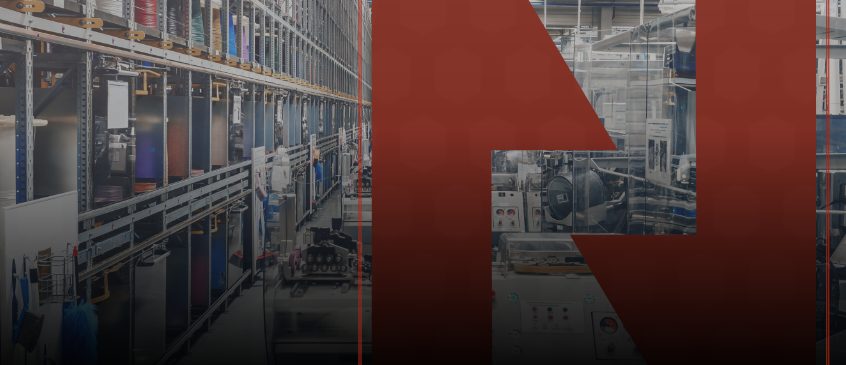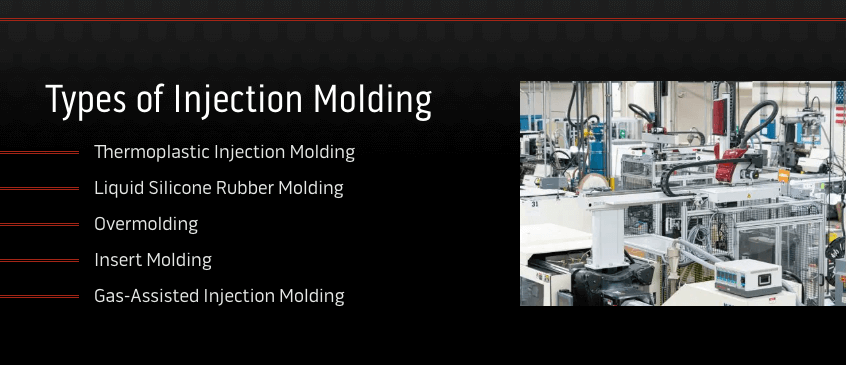

Injection molding is an innovative process in which a manufacturer uses a high-pressure injection to put molten plastic into a mold cavity, producing various plastic products for various industries. Many manufacturers use this process to mass-produce plastic components since it is fast and efficient.
Injection molding has many applications, varying from automotive body parts to bottle tops. The primary reason for injection molding is to produce large volumes of identical components. Injection molding often pairs different materials, like metal and thermoplastic, to make durable products.
Are you interested in learning more? This injection molding guide will help you explore everything you need to know about this technique. We break down the essentials of this process, including how molding machines work and whether it is the right method for your application.
Plastic injection molding refers to a manufacturing process for producing plastic parts and products with a special-purpose machine. The molding equipment uses heat to liquefy plastics, then injects them into a set mold. Common examples of products you can create with this method include:
The plastic injection molding process can have many advantages, including the following:
The injection molding process is relatively quick and involves four main stages:
A clamping unit holds both halves of the mold closed before attaching it to the heavy injection molding machine. The machine then injects the material into the mold while it’s clamped together.
This stage is vital because the clamping force is necessary to withstand the pressure from the melted materials inside and ensure none of it spills out.
Heat and pressure inside the molding machine melt plastic pellets, liquefying them so the machine can effectively inject them into the mold. Injection time depends on a few factors, including:
The machine’s hydraulic system controls the rate of injection and the pressure it reaches.
After injection, the cooling process begins. The plastic inside the mold will start to harden and take the shape of the surrounding form. In some instances, the plastic may shrink slightly during this stage.
The mold should stay shut until the plastic is entirely cool.
The final stage in the injection molding process is ejection. The machine features a specialized system to push out the plastic once it cools. Parts sometimes stick to the mold, so the machine has to force them out.
Once the newly formed part is ejected, the machine can close the mold and start the process again.
Manufacturers typically opt for injection molding to maintain efficiency when producing large quantities of the same products or parts. This method is often useful for applications in the following industries:

Explore the following types of injection molding techniques and their defining characteristics:
Thermoplastic injection molding is one of the most popular types of injection molding. The machine injects heated plastic resin into the mold. As it cools, the resin takes on the mold’s form and is complete.
Liquid silicone rubber molding, also known as liquid injection molding, is a thermoset process that involves mixing and curing two compounds using heat inside the mold. This type of injection molding is ideal for forming complicated shapes.
Another type of injection molding is a multi-step process called overmolding, also known as two-shot molding. During this manufacturing process, two or more components are molded on top of each other.
Insert molding is a form of injection molding used to bond plastic and nonplastic materials. The method works by placing a nonplastic insert into the mold and injecting the plastic to encapsulate it. Once the plastic sets, the materials establish a highly durable bond. For a deeper understanding of this process, you can explore our article on insert molding.
Gas-assisted injection molding involves injecting inert gas into heated plastic to fill out the mold and establish hollow parts. Manufacturers use this process for making products such as:
Consider the following factors to determine if injection molding is suitable for your project:
If you need a manufacturing process that supports consistency and quality control, injection molding might be a perfect choice. This technique also makes it simple to scale your production volumes as needed.
If you are interested in injection molding for your upcoming project, turn to the experts at New Concepts Technology for assistance. Our state-of-the-art facility offers a wide range of manufacturing services, including automation and assembly. Additionally, if you’re interested in how automation can enhance your manufacturing processes, check out our article on automation.
Our team has experience working with Fortune 500 companies to fulfill all their injection molding needs. Our systematic molding techniques support high-density precision and our expertise in a broad range of resins allows us to meet many industry-specific formulations. Are you interested in learning more? Contact New Concept Technology for a reel-to-reel injection molding quote today!